#lahun
Text
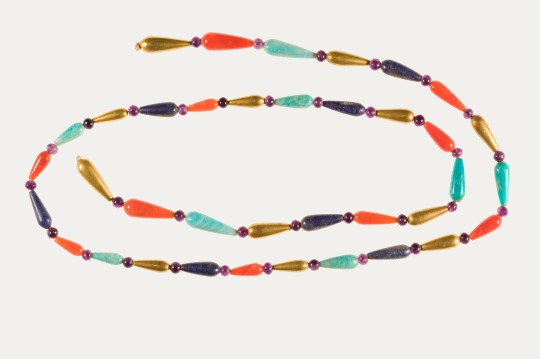
Necklace of Sithathoryunet - Met Museum Collection
Inventory Number: 16.1.4
Middle Kingdom, Dynasty 12, ca. 1887–1813 B.C.
Location Information: From Egypt, Fayum Entrance Area, Lahun, Tomb of Sithathoryunet (BSA Tomb 8), Chamber E, box 4, BSAE excavations 1914
#Necklace of Sithathoryunet#necklace#necklaces#jewelry#middle kingdom#dynasty 12#lower egypt#lahun#Tomb of Sithathoryunet#met museum#16.1.4#MKJ
0 notes
Text

Diadem of Princess Sithathoriunet
When Flinders Petrie and Guy Brunton explored the shaft tomb of Princess Sithathoriunet in 1914 (located in the funerary complex of Senusret II at El Lahun), they found little apart from her red granite sarcophagus and a set of canopic jars, the vessels which accompanied each burial to house the internal organs. Then they discovered a niche in the wall that had been plastered over.
Inside were five boxes containing Sithathoriunet's jewelry, a mirror, razors and pots for cosmetics. Most of the objects from this tomb are now on display in the Metropolitan Museum of Art, New York. The masterpiece in this collection is a diadem with a circular band of gold decorated with a uraeus or rearing cobra at the front and fifteen rosettes. It also has two gold plumes and six bands of gold hand down from the diadem.
Middle Kingdom, 12th Dynasty, reign of Senusret II, ca. 1897-1878 BC. Now in the Egyptian Museum, Cairo. JE 44919
166 notes
·
View notes
Text
"The studied sources show us the importance of ancestors’ worship in domestic context. We may even say that it is the predominant household religion practice in the Middle Kingdom. Several typologies of vestiges clearly point to this kind of practice: the altar and the associated stela from Lisht and also from Askut, the parietal decoration from Lahun, the stela from Lahun, and, above all, the set found at Kom el-Fakhry (the different elements were accounted separately), illustrate, clearly and without interpretation doubts, a domestic space aimed for ancestors worship.
[…]
The worship of divinities seems to be less pronounced in the Middle Kingdom household religion. This idea is consistent with the prevailing perspective that states that the relationship between the believer and the gods, in ancient Egypt, only effectively develops in the New Kingdom within the context of Personal Piety24. Nevertheless, in the Middle Kingdom, the gods weren’t absent in the domestic context. They are identifiable, in representations or through the presence of the name, in statues (Taweret and an unidentified god), stela (Khentekhetai), figurines (Taweret and Isis with Hórus), ceramic pieces (Bes and Sobek) and mainly in amulets (Ptah-Sokar-Osíris, Taweret, Bes, Hathor, unidentified god and Harpócrates)."
Susana Mota, « Beyond the obvious: the Middle Kingdom sources and its contribution to the study of household religion in ancient Egypt », ENiM 11, 2018, p. 27-28.
21 notes
·
View notes
Note
okay, here is a fun little question for you: of all the celebrations and ceremonies and festivals and parties held across ancient egypt, which do you think would be the most lit and why?
To be fair we don't know a lot about most of them, only that they happened. They didn't really write this sort of thing down in any detail unless it was a major festival. The little ones held locally, we only really know the names of unfortunately.
I guess the 'most lit' would be Heb Tekh (The Festival of Drunkenness) and I'm going to copy what I said from another ask ages ago to explain what this festival was, and then you can see why I chose it.
Heb Tekh, or the Festival of Drunkenness, and also the Beautiful Feast of the Valley are the ones that a lot of people cite as the ones everyone knows when it comes to the drunken sex festivals. It’s the one with the ‘drunken orgies’ in honour of the goddess Bastet (or Hathor or Sekhmet, it depends because they can be interchangeable in the myth this references). This is a celebration of the myth of the Destruction of Mankind, wherein Hathor/Sekhmet/Bastet is sent to kill mankind by Re, but he changes his mind and they have to subdue her bloodlust with beer coloured red with ochre. She gets drunk, and mankind is saved. The festival uses beer and sexual acts, to give thanks and ask for a good inundation. It’s important to note here that it’s not ‘sex for fun’ but rather ‘sex as part of a religious ritual’, so when thinking about it you need to detach the part of you that thinks ‘ew sex in religion’ and come into it with a much more neutral ‘this is what the Egyptians believed’.
Using this article here by Victorian Jensen (Berkeley), the earliest, and non contestable, evidence for the Heb Tekh is a 12th Dynasty papyrus from the Pyramid town of Lahun which records a festival of drunkenness on that date, and then in the 18th Dynasty at the Temple of Mut at Karnak, Hatshepsut built a ‘porch of drunkenness’ for the festival that’s the same date as the 12th Dynasty festival. As the festival if in the ‘flood’ (Akhet) season, it’s associated with fertility too. Basically, they would feast until they got drunk and fell asleep in the temple courtyard, or the feast would take place in the home with the same results. One of my former lecturers is part of the dig team for the Temple/Precinct of Mut, and when they taught us about this festival, they mentioned the drunken sex that was a result of this festival, and that it usually occurred in tombs of dead relatives as it was supposed to increase fertility and luck. This is also key since it takes place during Akhet, and graffiti has been found that discusses ‘travelling to the marshes’ during the festival, which is an Egyptian euphemism for sex, as they viewed marshes as the place from where life sprang forth, equating them with the Primordial mound. Here, I’m referencing this 2014 work (from a 2010 conference paper) by Betsy Bryan(John Hopkins), and if people don’t want to read a long article (you do have to scroll through the entire bibliography before you get to it), then you can read this 2013 LA Times article with Betsy Bryan herself. I quote from the first article:
A hall of drunkenness (wꜢḫ/wḫꜢ n tḫ) is not so far otherwise attested, although a st tḫ is identified in the Medamud hymn concerning the festival of drunkenness discussed by J. Darnell (1995, pp. 49–59). Darnell has commented that “places of drinking” should be understood as kiosks along the river bank akin to those beer kiosks referred to in love songs. He likened them to the mswr referred to in drinking songs from the Processional Colonnade’s Opet Festival reliefs at Luxor temple (ibid., p. 59 nn. 66–67; Epigraphic Survey 1994,pp. 12–14, pls. 26, 97). However, the st (n) tḫ in the Medamud hymn is a parallel term for the hall of traversing the marshes associated with temple courts with papyriform columns emulating the fertile aquatic place of creation: mἰ.ṯ swtwt m st tḫ wꜢḫy pfy n sꜢb sšw “Come the procession is in the place of drunkenness, that hall of traversing the marshes” (Darnell 1995, pp. 50–52; DePauw and Smith 2004, pp. 82, 88–89)….
….It is likely, how-ever, that the court before the temple, bounded by the mudbrick Second Pylon and east and west enclosing walls, housed the sequences of the festivals that began earlier in the evening, including the procession of participants, lighting lamps, prodigious drinking, and sexual behavior as described for the goddess Rattawy in the Medamud hymn, the demotic ostraca published by DePauw and Smith, and the Mut hymn recently published by Jasnow and Smith (Darnell 1995, DePauw and Smith 2004, Jasnow and Smith 2010–11).
We’re not entirely sure about why they included sex in this festival, since it does not occur in the original myth. However, knowing at what time it takes place (during the rising fertile flood waters), the repeated references to the fertility aspect of the goddesses, and songs about the festival that sing:
“I remember visiting the ancestors, and when I went, anointed with perfume as a mistress of drunkenness, traveling the marshes.”
When a tomb is a place of rebirth, and taking place during the fertile season, for a festival of a fertility goddess, it would seem likely that the drunkenness and sexual content of the festival was on the one hand to replicate the subdued nature of the drunken goddess, and on the other to placate her with fertility rituals in order to ask for fertile soil and a good crop of food. Early references to sexual behaviour during the festival tend to take the form of euphemisms, like the one above, whereas later periods, like the Ptolemaic and Roman, are much more open about what was occurring (page 118 of Bryan’s article is where the proper discussion on sexual activity takes place).
So, Heb Tekh is lit because it involves getting drunk and fucking in temples or the tombs of your ancestors in the name of religion.
62 notes
·
View notes
Text
Riyad as-Salihin, The Book of the Remembrance of Allah, Book 15, Hadith 10
Chapter: The Excellence of the Remembrance of Allah
It has been reported that 'Abdullah bin Zubair (May Allah be pleased with them) used to recite after Taslim at the conclusion of every Salat (prayer):
"La ilaha illallahu wahdahu la sharika lahu, lahul- mulku, wa lahul-hamdu, wa Huwa 'ala kulli shai'in Qadir. La hawla wa la quwwata illa billah. La ilaha illallahu, wa la na'budu illa iyyahu, Lahun-ni'matu, wa lahul-fadlu, wa lahuth-thana'ul-hasan. La ilaha ilallahu, mukhlisina, lahud-dina, wa lau karihal-kafirun (there is no true god except Allah; He is One. To Him belongs the dominion and to Him is all praise, and He is Powerful over all things. There is no power and might except with (the help of) Allah. There is no God but Allah and we worship none except Him, to Him belongs the bounty and to Him belongs the grace, and to Him belongs all excellent praise; there is no deity but Allah. We reserve our devotion exclusively for Him though the disbelievers may detest it)." Ibn Az-Zubair said: The Messenger of Allah (ﷺ) used to celebrate Allah's Greatness in those terms after every Salat (prayer).
[Muslim].
#allah#god#help#islam#religion#love#muslim#revert#convert#pray#salah#prayer#dua#hadith#quran#muslimrevert#muslimconvert#reverttoislam#converttoislam#reverthelp#reverthelpteam#howtoconverttoislam#welcometoislam
4 notes
·
View notes
Text
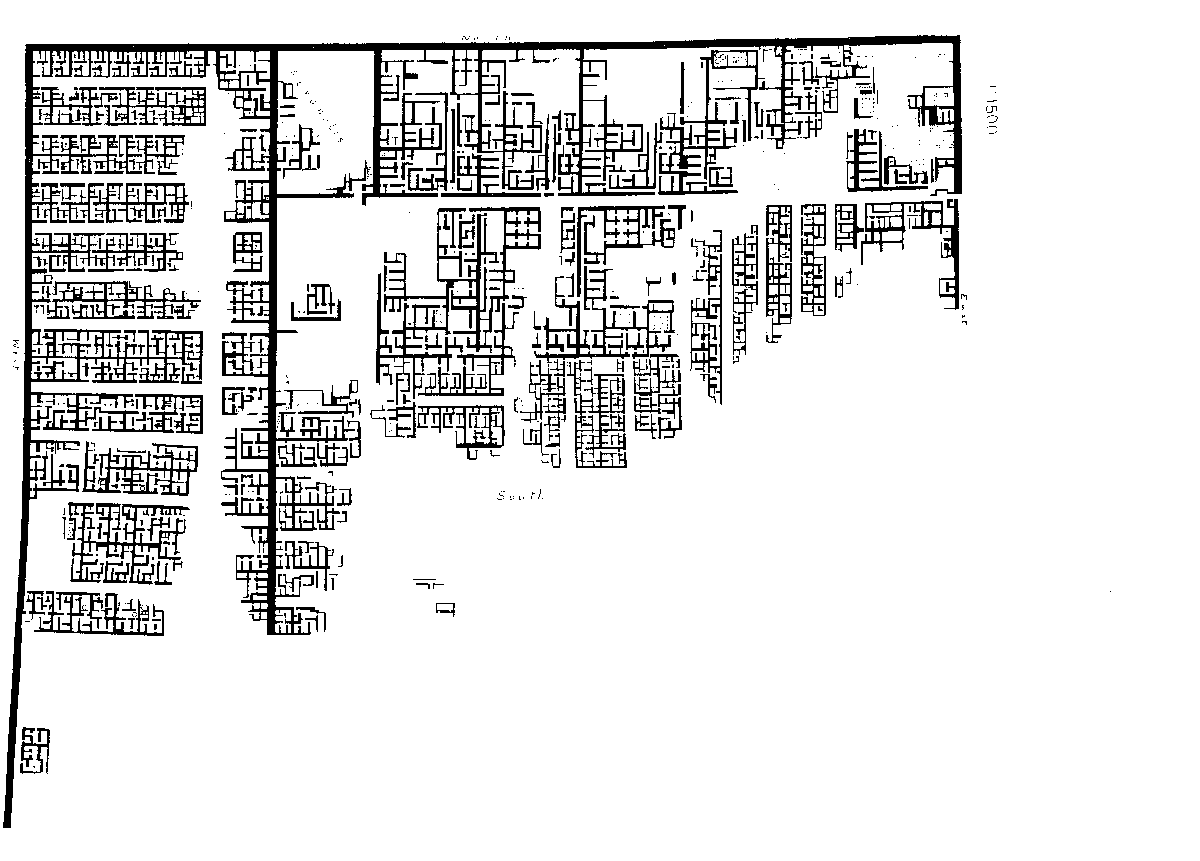
On the Lahun
El lahun is a very interesting theme in the Egyptian story.
In history as a subject, the absence of adequate findings opens the door for interpretations.
In this case, you are not just reading history you are also reading the historian-the writer-
Here is the interpretation that I believe in so far, and until the opposite.
This city was planned first for a fewer number of workers, including chefs and maybe relatives of the royal family.
Later the planners/engineers find out they need more workers, either to accelerate the work pace or there needed to be done ... etc
I remember reading the interpretation of the Lahun city plan and getting upset how an author mixed his religious beliefs with city planning to come up with the idea that the reason behind such plannign is that it was in Egypt an unfair and unjust city.
Today I share with you the interpretation of the city plan according to Dr. Eng. Alexander Badawy :
''The plan of the workmen's city at El Lahun is based on a module which forms the unit of the grid. A similar grid seems to have been used to set the constructional diagram of the plan or elevation of monumental buildings. As a rule this constructional diagram is symmetrical and is formed of a square with one or more 8:5 (base:height) isosceles triangles abutting it axially. As the 8:5 triangle embodies the harmonic ratio of the Golden Number (1.618), any diagram comprising such units as this triangle and one or more squares set axially forms a harmonic framework, into which the plan or elevation may be set. It seems, at least in some examples, that the actual basic dimensions that determine the significant points of the plan were chosen from the consecutive numbers of a summation series of Fibonacci: 3, 5,8, 13, 21, 34 5,''
#egyptian architecture#egyptian religion#egyptology#city#ancient history#history#egyptian#ancient egypt#egyptian gods#eg
11 notes
·
View notes
Photo

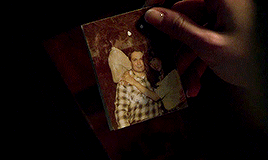

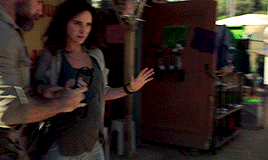






Mayans MC | 2x04 - Lahun Chan
48 notes
·
View notes
Text
ROUND 1 POLL 54 SIDE A

About the NPCs:
Naiya is a singer in Misthallery and implied to be friends with Janice Quatlane.
Otherwise known as: ネーヤ (Japanese)/Casey (Italian)
Douglas Dert is a reporter for the London times, seen frequently reporting on Katrielle's cases.
Otherwise known as: ピート (Japanese); Samuel Sniffer (German); Francis McWendall (Spanish); Nicolas Lahune (French); Timothy Piccione (Italian); Sjoerd Spit (Dutch)
#pl#professor layton#naiya pl#douglas dert#layton's mystery journey#professor layton and the last specter#round 1#side a
2 notes
·
View notes
Photo
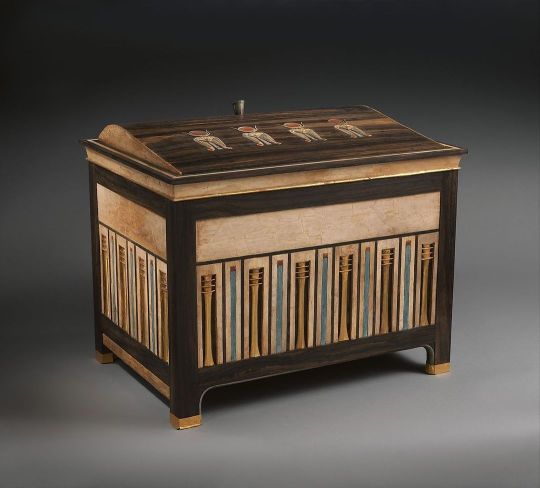
Jewelry chest of Sithathoryunet 𓉡𓅭𓏏𓉺𓏌𓏏 “ḥw.t-ḥr s3.t iwn.t” Because the original wood 𓇋𓅓𓏲𓆭𓏫 “ı͗mw” of Sithathoryunet’s boxes had decayed, they were reconstructed in the Metropolitan Museum based on the detailed notes of the excavator Guy Brunton. The gold 𓋞 “nbw” djed pillars 𓊽𓊽𓊽 “ḏ.w” on the sides are symbols of the funerary god 𓊹 “nṯr” Osiris 𓊨𓁹 or 𓁹𓊩 “wsir” as well as the word for ‘stability’. The emblems on the lid belong to Hathor 𓉡 “ḥw.t-ḥr” ‘The Temple of Horus’, the goddess of beauty 𓄤𓄤𓄤 “nfr.w”, making them appropriate symbols for a cosmetic box. Period: Middle Kingdom Dynasty: Dynasty 12 Reign: reign of Senwosret II–Amenemhat III Date: ca. 1887–1813 B.C. Geography: From Egypt, Fayum Entrance Area, Lahun, Tomb of Sithathoryunet (BSA Tomb 8), BSAE excavations 1914 Medium: Ebony, ivory, gold, carnelian, blue faience, silver Dimensions: L. 46 cm (18 1/8 in.); H. 36.7 cm (14 7/16 in.); W. 32.5 cm (12 13/16 in.) 𓋹𓎬𓋹𓎬𓋹𓎬𓋹𓎬𓋹𓎬𓋹𓎬𓋹𓎬𓋹𓎬𓋹𓎬𓋹𓎬𓋹𓎬𓋹𓎬𓋹𓎬𓋹𓎬𓋹𓎬𓋹𓎬 🎥 @egyptologylessons 𓋹𓊽𓋴𓆖𓎛𓇳𓎛 © (📸 @metmuseum and description) 𓊁𓊁𓊁𓊁𓊁𓊁𓊁𓊁𓊁𓊁𓊁𓊁𓊁𓊁𓊁𓊁𓊁 #Ancientegypt #ägypten #egyptianhistory #egyptology #hieroglyphs #egypte #egitto #埃及 #مصر #egipto #이집트 #chest #hathor #jewelrybox #metropolitanmuseumofart #egyptiangoddess https://www.instagram.com/p/ChFdbKRO5dc/?igshid=NGJjMDIxMWI=
#ancientegypt#ägypten#egyptianhistory#egyptology#hieroglyphs#egypte#egitto#埃及#مصر#egipto#이집트#chest#hathor#jewelrybox#metropolitanmuseumofart#egyptiangoddess
19 notes
·
View notes
Text
Salima Ikram on the “Floating Pyramid” of Pharaoh Senusret II
“Egypt’s ‘floating’ pyramid mystery solved with 4,000-year-old ‘treasure trove’ discovery
| World | News
By Admin on January 30, 2021
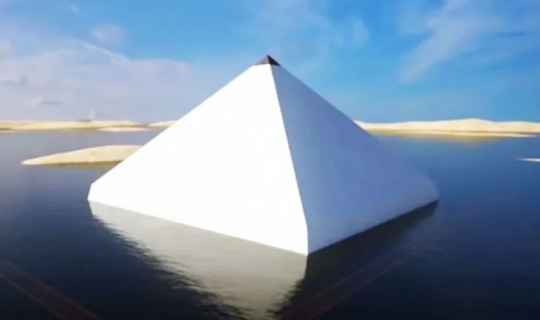
Pyramid of Lahun: Expert explores Egypt’s ‘floating’ pyramid
In the 12th Dynasty of the ancient civilisation, Pharaoh Senusret II ordered for the construction of the Pyramid of Lahun. The fourth ruler of this period in history took a great deal of interest in the Faiyum Oasis region – south of Cairo – and began work on an extensive irrigation system from Bahr Yussef through to Lake Moeris in Middle Egypt. The purpose of his project was to increase the amount of cultivable land in that area and, as a result of his efforts, it would remain the political capital of Egypt through to the 13th Dynasty.
When he died in 1878 BC the pharaoh was buried in his monument and now, the Science Channel’s ‘Unearthed’ documentary has unravelled the secret to his incredible architecture.
The series explained: “Built around 1870 BC, it’s a mighty monument clad in gleaming limestone that rises 160 feet above the desert.
“At the top, a black granite capstone makes a connection to the heavens.
“Next to it, a smaller pyramid – for the pharaoh’s queen – and eight stone mastaba memorials.
How the pyramid may have looked 4,000 years ago (Image: YOUTUBE/SCIENCE CHANNEL)
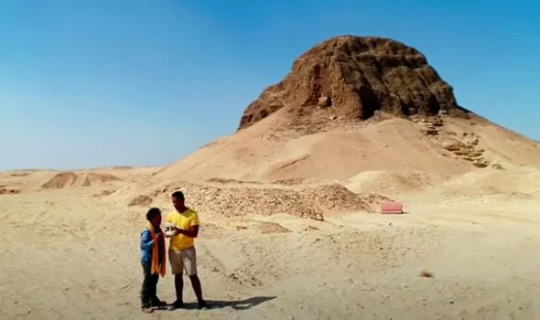
Experts visited the ancient monument (Image: YOUTUBE/SCIENCE CHANNEL)
“It was all enclosed by a huge mud-brick wall. The complex was said to be surrounded by water, seemingly floating in the desert.
“It stands in Egypt’s vast western desert. This is a fertile area of the desert known as the Faiyum Oasis.”
Leading archaeologist Dr Salima Ikram revealed her theory on how the pharaoh created the illusion that his pyramid was floating.
She said: “What a sight it must have been for people, to look at something like that – this mountain of a pyramid encircled by water.
“We’re in the middle of a desert, but in the distance, you can see there is lots of greenery and vegetation.

How the ancient site may have once looked (Image: YOUTUBE/SCIENCE CHANNEL)
“The fact that there is a lush oasis here means there is a constant supply of water.”
During the documentary, experts used drone footage to track what they believed to be the route of the ancient waterways.
The narrator explained: “The pyramid is built about 10 miles from the River Nile.
“In ancient times, the annual floods inundate the barren land with life-giving water and minerals.
“A huge canal constructed by an earlier pharaoh also channels water from the mighty river to the Faiyum.
“Salima thinks that the Nile and the canal are not the only sources of water.”
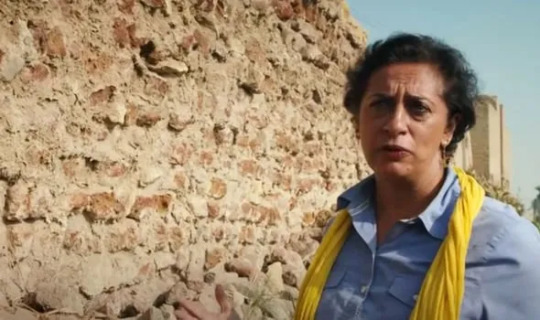
Salima Ikram identified a modern dam (Image: YOUTUBE/SCIENCE CHANNEL)
Dr Ikram then put forward her theory.
She added: “This large water channel that connects to the Nile is one of the main sources of water for this whole area near the pyramids.
“I wonder what it would have been like 4,000 years ago when it was much wetter, it rained much more and there were even powerful floods.
“The amount of water here makes it a bit curious that someone should choose their site to build a pyramid.
“Senusret II could have been buried with his father several miles to the north of here, but he actively came and sought out and chose this place so he must have had a very good reason to do that.”
Visiting a nearby dam, Dr Ikram explained the crucial role she believes it played in ancient Egypt.
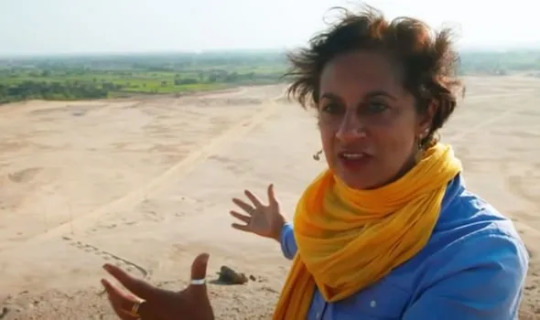
Dr Ikram said the pharaoh’s work played a crucial role (Image: YOUTUBE/SCIENCE CHANNEL)
She added: “What’s really interesting is if you go all the way down, this dam is built on the foundation of Senusret II’s dam.
“This is the first dam ever built in the Faiyum and he used it to tame this region and turn it into an agricultural treasure trove.”
And the series detailed how it played a key role thereafter.
The narrator continued: “The pharaohs before Senusret dug out a waterway from the Nile to the Faiyum, creating a massive lake and oasis.
“Senusret himself builds dikes and irrigation channels to distribute water to the surrounding desert.
“Drawing water from the oasis, Senusret creates 17,000 acres of new farmland near the lagoon and he builds his pyramid right next to it to commemorate his achievement and life’s work.” “
Source: https://www.moradabadpages.com/egypt-s-floating-pyramid-mystery-solved-with-4-000-year-old-treasure-trove-discovery-world-news/
9 notes
·
View notes
Text
The effects of the worldwide pandemic have been devastating for the travel industry and travelers themselves which affected the Egypt travel Packages that give you a chance to discover more about Egypt through its Egypt Luxury trips or if you don't have much money it can be through Egypt Cheap Budget tours. In the coming years, it’s essential that destinations and hotels give visitors a safe and reassuring experience that will relish Egypt's Christmas tours to have a fantastic family vacation which also can be done through Egypt Easter Tours or have a sail through the Nile through Egypt Nile Cruise Tours.
Cairo tour from Alexandria to return to the port said. you can have a camel ride in the oldest wonders of the world built by the great Pharaohs of ancient Egypt during the Giza Pyramids tour with a Camel ride from Alexandria or have a spectacular tour to the Grand Egyptian Museum and Giza Pyramids tour from Alexandria port. Abdeen Palace and Giza Pyramids tour is the perfect way to see two of Egypt's most famous landmarks. If you are Looking for a unique way to see the Great Pyramids of Giza you can try the Hawara, Lahun Pyramid tour from Alexandria Port. one of the best ways to enjoy Cairo attractions is by trying Port said Shore Excursions where you can visit Giza Pyramids, the Egyptian museum, and Khan EL-Khalili bazaar during day tour to Cairo from Port Said and can visit Sakkara to see the step pyramid of king Djoser during Giza Pyramids tour from Port Said or visit the Greco-Roman city of Alexandria during Port Said to Cairo and Alexandria trip. you can also have a fantastic lunch on a Nile cruise through the Pyramids and the Nile Cruise lunch from Port Said or have a camel ride around the panoramic view of the pyramids during a private half-day tour of the Giza Pyramids from Port Said
@cairo-top-tours
@sohilaesam
@hagerkamal
@travelegyptinstylewithme
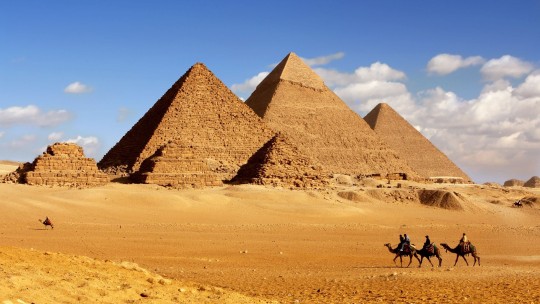
4 notes
·
View notes
Text

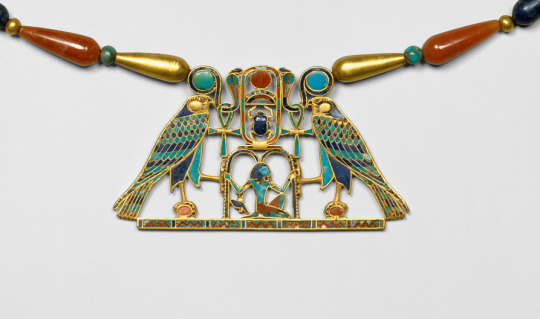
Pectoral and Necklace of Sithathoryunet with the Name of Senwosret II - Met Museum Collection
Inventory Number: 16.1.3a, b
Middle Kingdom, Dynasty 12, ca. 1887–1878 B.C.
Location Information: From Egypt, Fayum Entrance Area, Lahun, Tomb of Sithathoryunet (BSA Tomb 8), BSAE excavations 1914
Description:
This cloisonné pectoral is inlaid with 372 carefully cut pieces of semiprecious stones. The heraldic design is replete with symbolism. Zigzag lines on the base bar represent the primordial waters out of which the primeval hill emerged. Each of the falcons, symbols of the sun god, clasps a circular hieroglyph meaning "encircled," thus declaring the solar deity's supreme power over the universe. The same hieroglyph, elongated to form a cartouche, encircles the throne name of Senwosret II, Khakheperre. Flanking the king's name are two ankh hieroglyphs (meaning "life") suspended from cobras whose tails are wound around the sun disk on the falcons' heads. These snakes represent Nekhbet and Udjo, the traditional protector goddesses of the king. Supporting the royal cartouche is the kneeling god Heh clutching two palm ribs symbolizing "millions of years." Thus the king's life and existence in time are described as part of a universe created and sustained by the supreme sun god.
#Pectoral and Necklace of Sithathoryunet with the Name of Senwosret II#sithathoryunet#middle kingdom#dynasty 12#lahun#tomb of sithathoryunet#lower egypt#necklace#necklaces#jewelry#met museum#16.1.3a#16.1.3b#MKJ
1 note
·
View note
Text
Hive - Tim Curran Review
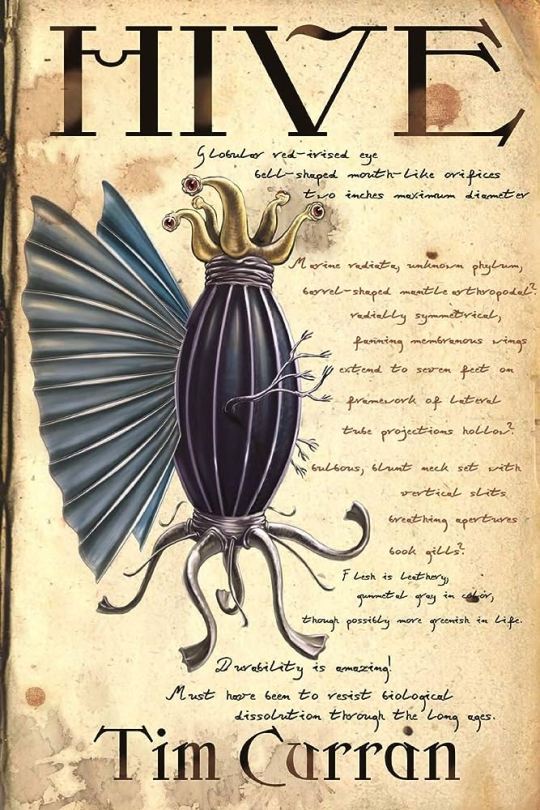
An Antarctic expedition led by Paleobiologist Dr. Robert Gates has uncovered frozen, but partially thawed mummies of an ancient race of beings that very well may upend every aspect of what we know about science and religion, including who or what may have made humankind. Dr. Gates brings the frozen bodies back with him to Kharkhov Station, a mistake which may just cost the world.
Hive by Tim Curran is a direct sequel to At the Mountains of Madness by H.P. Lovecraft, mixed with heavy aspects of John Carpenter's The Thing. It takes one hundred percent in Antarctica and primarily in three locations, Kharkhov Station, Medusa Drift (Deep Field Camp) and the subterranean caves and city of the Elder Things, who are the primary antagonists of the book and the Old Ones.
I think Curran does a great job setting the place up, giving a great isolated atmosphere to the story, though at no time did I love this crew say as much as the crew of Outpost 31 in The Thing. Even the main protagonist Jimmy Hayes is just sort of there for me (though I did like that he was from Kansas). All of the characters in Hive are pretty stereotypical blue collar workers, with a pencil pusher basically with LaHune, who is "running" the expedition and is the main human antagonist, consistently getting in the way of the scientists and workers.
I loved Curran's descriptions of the Elder Things as gelatinous winged creatures, thought that was really awesome. I absolutely loved the part with the video feed of drilling down into Lake Vordog and what is discovered in the ice, that was probably my favorite section of the book.
I have a couple critiques that kept me back from *loving* this book, as someone else said "Their tiny minds could not hope to contain or understand what it was they were seeing" (p54) but yet there are pages upon pages of descriptions of the beings. So I think that Curran sort of fails to properly convey the insanity inducing/mind breaking aspect of the Elder Things/Old Ones/Shoggoths that Lovecraft is able to convey and also I think an aspect that is dropped, never really approached, is the paranoia that is present in John W. Campbell's Who Goes There? and its adaptations. These beings are taking over people from Kharkhov Station, but why? They seem to do better when they stay in their own form. I feel like Curran never really justified this beyond being a cool horror image (and it is a cool image, discarded human skin like a spider shedding it's skin).
My biggest problem with the book is the two flashback sections of previous expeditions. I feel like there had to of been a better way to incorporate them into the narrative if Curran felt they were necessary. As they are, they grind the main narrative to a halt and I don't feel that there's anything in them that couldn't have had a way to be conveyed in the main story. As a world building exercise, they're fine I guess, though sort of plodding, possibly could have worked better as separately published short stories. I did find out in the originally published version of Hive these weren't present and I don't know if that was a publisher edit or an author edit, but I think it was a correct edit. If they were absolutely necessary, maybe they could have been published as a side-novella?
I hate my critiques were longer than my positives, because I really did enjoy this book. I will definitely read the sequel, Hive 2 and I added another book from Curran to my Halloween Reading List for 2023 as I think Curran is a really talented writer.
4/5
#halloween reading 2023#horror#tim curran#hive#horror reading#horror novels#antarctica#at the mountains of madness#h.p. lovecraft#john carpenter#the thing#kharkhov station#medusa drift#deep field camp#elder things#outpost 31#old ones#shoggoths#john w. campbell#who goes there?#lake vordog
0 notes
Text
Lahun Tzolkin Calendar Maya Bracelet Grade A Obsidian, High Vibe Gemstones Energy Crystal Healing Handmade Jewelry Wedding Gift for her by LithoGaia
http://dlvr.it/StCXlp
0 notes
Text
https://helenastales.weebly.com/blogue/extraterrestrial-mummy-found-by-an-archaeologist-near-lahun-in-egypt
View On WordPress
0 notes